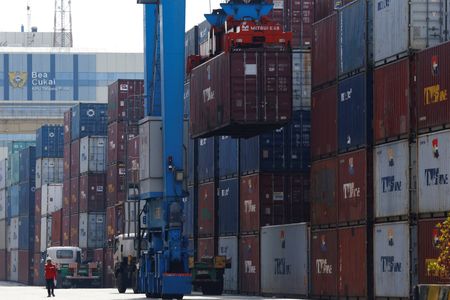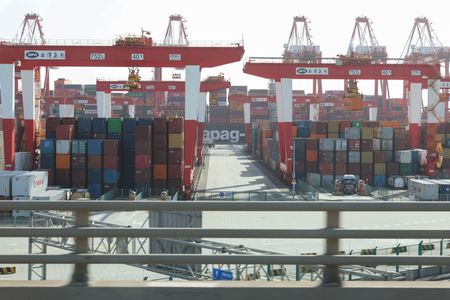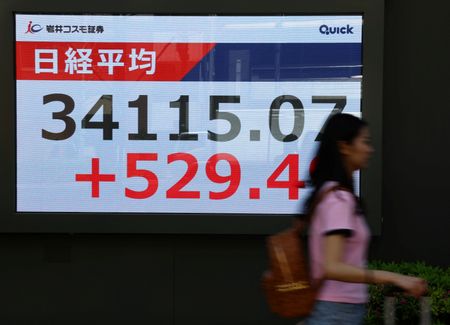By Xiuhao Chen, Joe Cash
BEIJING (Reuters) -China’s exports likely picked up pace in March, as factories rushed out shipments ahead of U.S. President Donald Trump’s sweeping tariffs this month, though the broadening trade war with the United States has darkened the economic outlook.
Trade data for March is expected to show outbound shipments rose 4.4% year-on-year in value terms, according to the median forecast of 19 economists, accelerating from a 2.3 increase in the January-February period.
The slump in imports is expected to have persisted, down 2.0%, after an unexpected contraction of 8.4% at the start of the year.
The world’s second-largest economy has gotten off to a bumpy start this year. Manufacturing activity expanded at the fastest pace in a year in March and retail sales perked up, but rising unemployment and persistent deflationary pressures continue to fuel calls for further stimulus.
More worryingly and of immediate concern for Chinese policymakers is the risks to economic growth from an intensifying trade war with the United States.
Trump has singled out China for additional 145% tariffs, despite having suspended the reciprocal duties he had imposed on dozens of economies he accuses of “ripping off” the U.S. by selling goods into the world’s largest economy.
China has imposed 84% additional duties on American goods along with other retaliatory measures since Trump’s fresh April 2 burst of tariffs.
Trade tensions with the U.S. could cut the shipment of goods between two economies by as much as 80%, according to a World Trade Organization estimate released on Wednesday.
Goldman Sachs this week lowered its forecasts for China’s 2025 GDP growth to 4% from 4.5%, citing the effects of tariffs. Citi cut its forecast to 4.2% from 4.7% two days earlier.
China was not alone in stepping up efforts to out-run Trump’s tariffs.
German exports also rose more than expected in February, signalling world-wide fontloading, with shipments to the U.S. up 8.5% on the month in anticipation of the U.S. duties, as did shipments from South Korea.
China’s purchases of South Korean goods, a leading indicator of the China’s imports, fell 4.1% in March, Korean data showed this month.
China’s March trade surplus is forecast at $77.00 billion, down from $104.8 billion in December, the most recent comparable reading, but roughly in line with the level recorded a year ago. This will likely keep the production powerhouse in Trump’s sights given that bringing the trade gap down is top of his agenda.
Trade data is scheduled to be released on Monday.
(Reporting by Xiuhao Chen and Joe Cash; Polling by Susobhan Sarkar and Pranoy Krishna in Bengaluru and Jing Wang in ShanghaiEditing by Shri Navaratnam)










